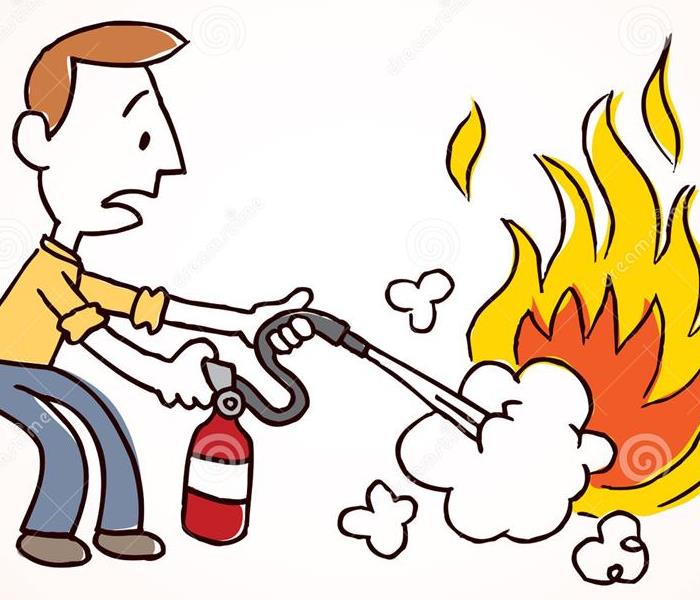Fire Classes and How to Extinguish the Fire
2/6/2018 (Permalink)
Class A fires are defined as ordinary combustibles. These fires are commonly flammable material one may find around their home. These items include wood, fabric, paper, trash, and plastic. To extinguish a Class A fire use either water or monammonium phosphate.
Class B fires are defined as one that uses a flammable liquid or gas as its fuel base. These fires are a common hazard in industries dealing with fuels, lubricants, and certain types of paint. Class B fires used to be majority of kitchen fires. However, because kitchen fires are typically the most common house fire, they have their own classification. Smothering Class B fires to remove oxygen will result in extinguishing the fire.
Class C fires are defined as fires that use electrical components and/or energized equipment as its fuel source. These fires are typically fueled by motors, appliances, and electronic transformers. Electrical fires are more likely to be seen in industries that use heavy electrically-powered equipment. Bad wiring can result in electrical fires. To extinguish these fires, one should cut the power off to the source and use a non-conductive chemical to extinguish the fire.
Class D fires are defined as one that uses a combustible metal as its fuel source. These combustible metals include titanium, magnesium, aluminum, and potassium. Class D fires are typically in a laboratory environment, but they can be found in other industries. You want to completely avoid throwing water on these fires because it is ineffective and can have the opposite effect. To extinguish these fires, use a dry powder agent which will absorb the heat and smother the fire.
Class K fires are defined as a cooking fire involving combustion from liquids used in food preparation. Greases, cooking oils, vegetable fat, and animal fat are all fuel sources that Class K covers. These fires are extremely dangerous and extremely destructive. To extinguish these types of fires, wet chemical fire extinguishers should be used.
If you or someone you know falls victim to a house or business fire, call SERVPRO of Bryan, Effingham, McIntosh, and East Liberty Counties at (912) 445-5190.


 24/7 Emergency Service
24/7 Emergency Service
